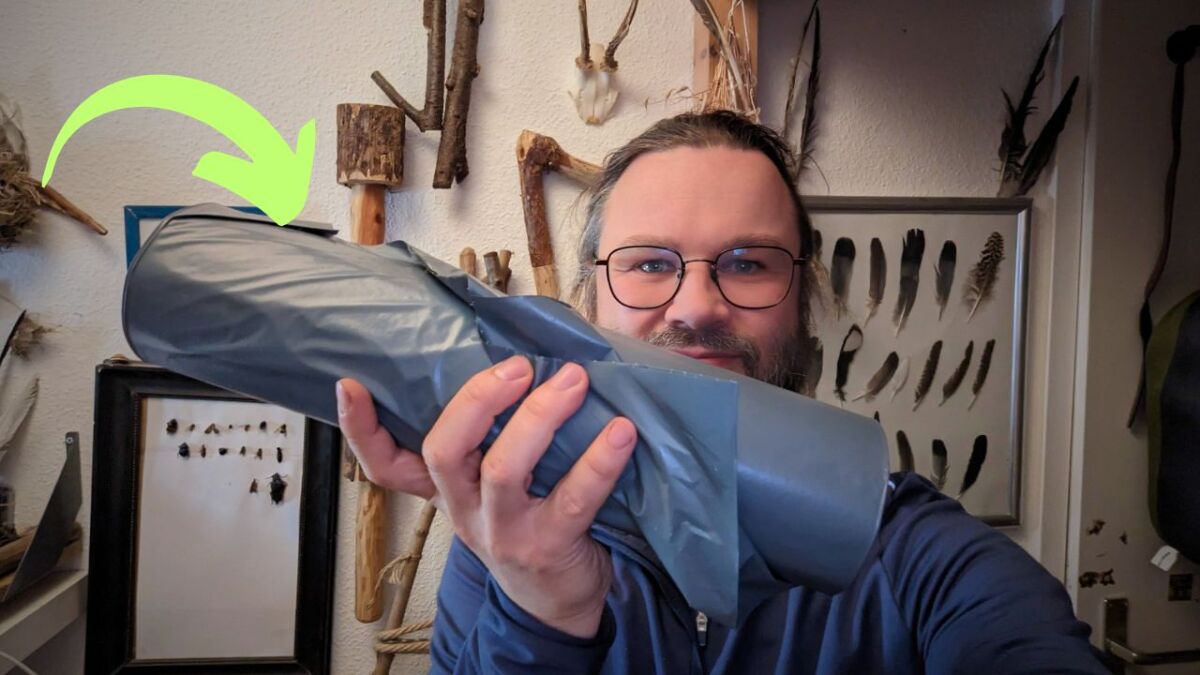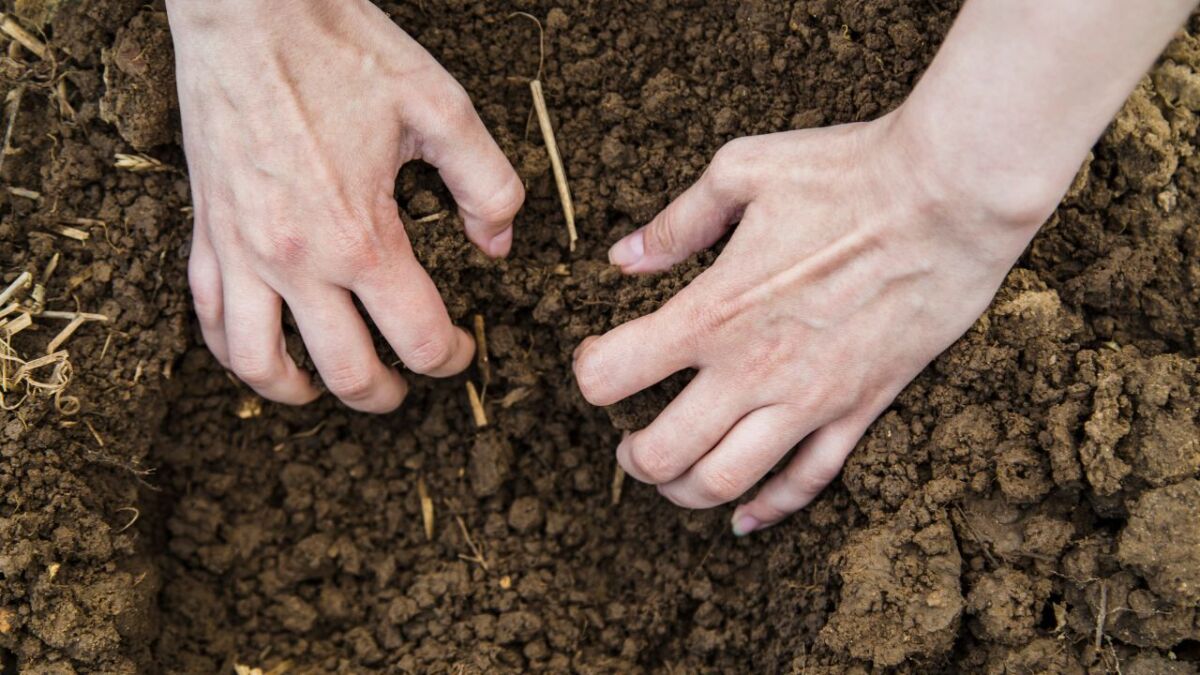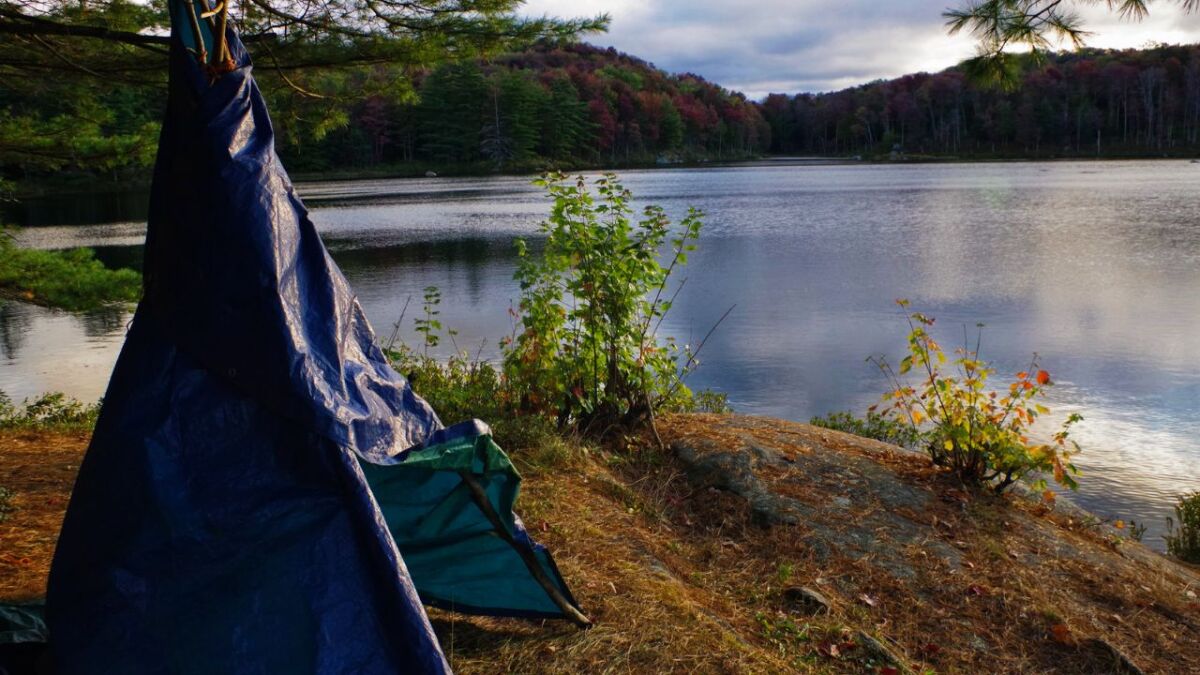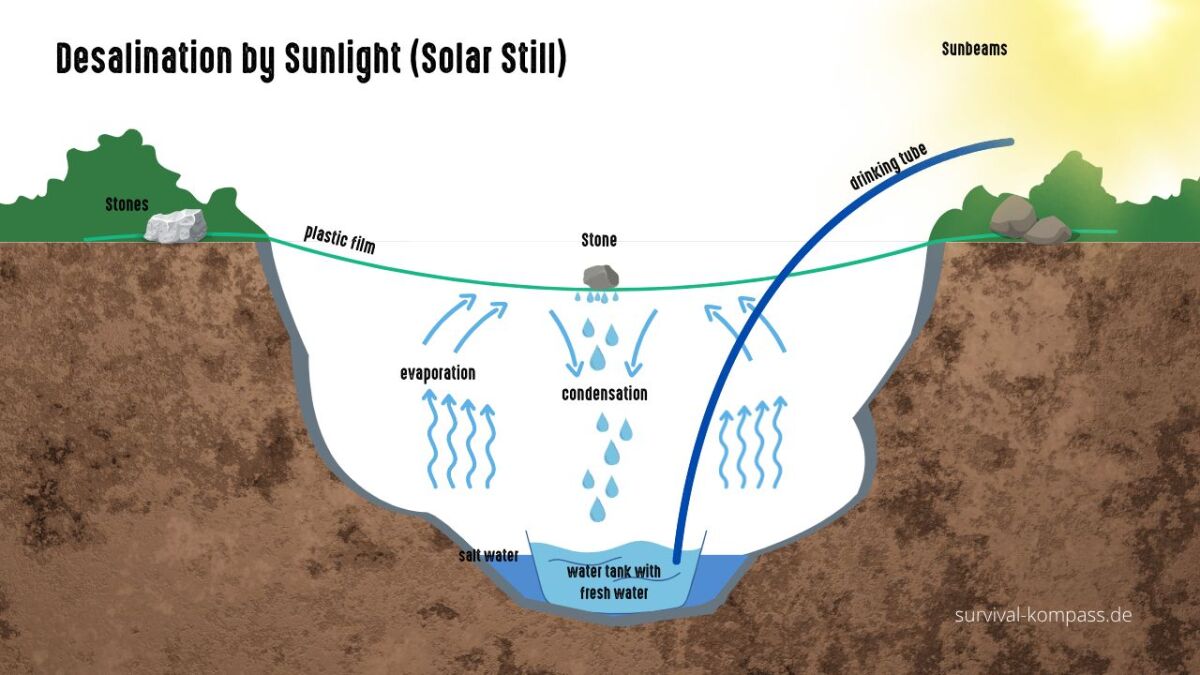
32 Survival Uses for Garbage Bags: Tips for Emergency Situations
👉 The key facts from this guide
- Garbage bags can serve as versatile survival tools in emergencies, including use as water containers, food storage, rain protection, flotation devices, and insect traps.
- Garbage bags can also be used as emergency clothing, padding, ponchos, emergency toilets, blankets or bivvy sacks, shoe insulation, and backpack protection.
- It is possible to make signs, a stretcher, a mattress, a rope, first aid applications, fire starters, and insulation for items out of garbage bags.
- With garbage bags, you can also make a solar still, a solar shower, a splint, a makeshift washing machine, a raft, and a fishing net.
- Despite their versatility, garbage bags should be used with caution, as they can contain microplastics and antibacterial chemicals that may be harmful.
- I recommend having garbage bags in bug-out bags, cars, survival backpacks, and prepper pantries as they can be life-saving in emergencies.
Have you ever thought about the fact that garbage bags can be real lifesavers in emergencies?
I know, it sounds crazy, but allow me to explain.
Imagine you are in the wilderness and suddenly a thunderstorm breaks out. You are soaked, freezing, and have no way to keep yourself warm and dry.
Or you urgently need something to transport or collect water, but don't have suitable containers with you.
Those are pretty dangerous and unpleasant situations, right?
But don't worry, I have the solution for you!
These 32 amazing survival uses for garbage bags show you how you can turn these simple and readily available items into real survival helpers.
You'll be surprised how versatile garbage bags can be and how they can save your life in emergencies.
So let's explore these underestimated resources together and learn how to use them in the fight for survival!
A small warning about plastic bags
Before we begin, I want to educate you about the risks of plastic bags. Especially in contact with food and water, plastic bags pose a certain risk.
Microplastics can come loose and get into your food or water, and therefore into your body.
In addition, some garbage bags are treated with antibacterial chemicals to counteract unpleasant odors.
Therefore, you should enjoy the following methods with caution and carefully weigh your options!
If your water shortage is life-threatening, however, I would still resort to the garbage bag before I die of thirst.
1. Collecting water with a bag
If you find a bag without holes, you can use it to collect rainwater. You can either dig a hole or hang it somewhere. You can also use it to collect water from rivers or streams.
If you find a transparent bag, you can even use the transpiration of plants.

Plants sweat similarly to us. In a part of the process of photosynthesis, plants release water into their surroundings in sunlight. You can make use of this process.
As previously mentioned, you need a transparent bag for this. You put it over a well-leaved branch of a tree or bush.
Make sure that you don't do this with a poisonous plant (good plant knowledge is practical here). Then you require something to tie the bag at the back, so the water doesn't evaporate.
It is important that the bag is well exposed to the sun. The more sunlight, the more the plant transpires.
Check back in 12 to 24 hours, and you will see that water has collected in there.
I have written a complete guide on this, and you can find it here: "The Transpiration Bag: With this Survival Method, you can Easily Collect Water in the Wilderness".
Here's my video about it:
2. Storing Food
Plastic bags can also be useful for packing your food and taking further steps.
If you need to hide your food from wild animals such as bears or wild boars, it's worth packing it beforehand.
Loose food on a tree could be found and eaten by ants, birds, or raccoons.
If you want to bury food, a plastic bag is also suitable. The bonus fact: the food stays cool in the ground.

3. Storing Water
Water is essential in the wilderness (here's the complete guide) and it's important to know how to safely store, store, and transport it.
One option is to use garbage bags or plastic bags that must be sturdy and sealed enough to hold the water without leaks.
When storing, make sure to keep it in a cool and shady place to avoid heat and the formation of algae.

4. Making your shelter waterproof with a bag
Whether to withstand the sun or rain, you need a reasonably waterproof roof.
With plastic, this is relatively easy if it's not too holey. Even by the motto: more is better.
If you have many plastic bags, you can attach them in layers to your shelter and thus build a waterproof and sun-protected roof.

Lastly, a trash bag can be used as a makeshift mat or groundsheet. This can provide insulation against the cold ground or keep moisture at bay.
Don't underestimate the versatility of a simple trash bag in a survival situation!
If you sleep outdoors at night, don't underestimate the importance of a waterproof base layer. It can protect you from dew, insects, or simply the wet and cold ground.
Not only can you protect yourself, but also your food, backpack, or any other items you want to keep dry. Plastic sheeting is also suitable for wood so that it does not become damp from below.
11. The garbage bag as a poncho
If you don't just want to protect yourself from the rain at night and not hide under your shelter?
Then you can make a poncho out of plastic film. To achieve this, all you have to do is cut a hole for your head and your poncho is ready.
You may ideally want to add holes for your arms.
In the video below, Greg Oven did it. Check it out, it's exciting.
12. An emergency toilet from a bag
The ideal situation in nature is to dig a hole. I have created a detailed guide on how to use the forest toilet.
However, if you are in an SHTF situation where there is no water supply, and you have not yet built a composting toilet in the garden, a garbage bag is worth its weight in gold.
Use a plastic bag and everything stays clean. If you still have a bucket, you can even sit for the "big business" by putting the bag in it.

13. A blanket or bivvy bag made from a garbage bag
A plastic bag can also be helpful as a blanket. Ideally, you already have a sleeping bag (here's my top list) that you can cover with the plastic bag.
This will make your sleeping bag rainproof and provide additional insulation.
However, you should only resort to this in an emergency, as sleeping bags are more breathable than plastic bags.
In everyday use, you should therefore air out your sleeping bag afterward, so that no mold forms and sweat odor can escape again.
Click here to find out how to wash and store your sleeping bag.
14. Making shoes waterproof with a plastic bag
This is a trick I often use when I unexpectedly have to move through wet terrain.
Without waterproof shoes, it can be a real ordeal.
Therefore, you can use plastic bags and tie them around your shoes to prevent water from entering.
I also sometimes do it the other way around and pack my socks in the plastic bag and then slip into my shoes. In the first case, the bags tear too quickly for me.
But beware: your feet will probably sweat here too, and the plastic will not let moisture escape. Good ventilation is important for this method.
15. Protecting your backpack from rain
Similar to the shoes, you can also pack your backpack in a bag. This will keep the rest of your clothes dry.
If you're still wrapped in a poncho and your shoes are wrapped in plastic, you'll probably stay dry.
16. The backup pillow for a restful sleep
You can even create your own inflatable pillows. Pure luxury!
Simply take an airtight plastic bag, inflate it and tie the end.
If the air doesn't hold, fill it with soft plant material, such as seeds or fine grass. And now you have a pillow, just like our ancestors had.
A word on noise: many plastic bags rustle, so you may disturb yourself while sleeping.

17. Signposts and Signalers
Are you looking for your own way through the wilderness, or have you lost your way? Then you can use trash bags to mark already-traveled areas.
You can often find colorful bags that are visible even from a distance.
However, I would like to note that there is already enough trash in nature, so please do not bring in anymore.
If you want to bring material for signaling, use biodegradable fabrics.
In my guide to primitive signals, you will find even more ideas.

18. A stretcher made of trash bags
Trash bags can also be used as an improvised stretcher.
You can use it to transport injured people or animals and even heavier equipment - perfect for a survival situation.
19. The mattress made of trash bags
We're taking it one step further and making a mattress to match the pillow.
The filling comes from nature, all we have to do is collect and stuff it in - whether it's grass, leaves, or hay. The forest always provides us with something.
20. A lying surface for the loft bed
Occasionally, I build a loft bed from tripods in the forest, and you can stretch thick garbage bags in between them. This gives you a soft lying surface and the construction is quickly set up.

21. Making a rope
An ordinary plastic bag tears quickly, but when we twist it together, it becomes very reliable.
The more plastic bags you twist, the stronger and thicker your rope becomes. But it also becomes less flexible.
Learn the technique in my guide on twisting ropes.
IMAGE
22. First aid applications
Plastic materials can be of great use in various first aid situations - especially when you are in an emergency situation and do not have any specific medical supplies at hand.
Plastic bags or films, for example, can be used as improvised wound dressings to create a sterile barrier and prevent dirt or bacteria from entering.
Similarly, you can use them as a pressure bandage or tourniquet to control bleeding.

23. Using plastic bags to start a fire
In a survival situation, starting a fire is crucial for warmth, light, protection and preparing food.
Plastic bags can be used as a fire starter in such situations. The plastic burns slowly and can generate enough heat to ignite dry grass or small twigs.
However, it should be noted that burning plastic releases toxic fumes and should therefore only be carried out outdoors and with caution.

24. Using Plastic Bags for Insulation
Trash bags are not only a promising way to keep objects dry, but also offer a certain layer of insulation.
For example, they can be used to protect electronics or batteries from moisture or extreme temperatures by wrapping them in plastic bags.
25. A Transparent Bag as a Solar Still
Use a transparent plastic garbage bag as a "greenhouse" plastic for a solar still to collect and process drinking water.

There is also a great video to go with it:
26. Building a Solar Shower from a Trash Bag
Build a DIY solar shower by filling a black plastic trash bag with water, warming it in the sun, and poking small holes in it to let the water out.
27. Tying a Splint
You can also use garbage bags to secure a splint when a bone is broken.
It may be necessary to use several of them to ensure that the rail is stable.
28. Stay clean with a trash bag
When you're out in the wilderness or in the garden, trash bags and plastic bags can serve as practical protective clothing.
For example, if you have to slaughter an animal to get food or help someone who is injured and bleeding, trash bags can be a real lifesaver.
You can use a large trash bag as an apron by cutting holes for your head and arms and then tying it around your body. This will protect your clothing from dirt, blood, and other fluids.

Smaller plastic bags are great for makeshift gloves. Just slip them over your hands, and you're ready to get to work without coming into contact with unpleasant substances.
29. Washing clothes in trash bags
If you're out and about and need to wash clothes quickly, you can use a trash bag as a provisional washing machine.
Simply pack your dirty clothes in the bag, add warm water and soap. Shake the bag vigorously so that the soapy water can clean the textiles.
Then drain the dirty water, add clean water, and shake again to rinse the clothes. Voilà - your clothes are fresh and clean!
30. Fixing leaks in an emergency
If you encounter a leaky roof or container in the wilderness or even at home, trash bags can serve as a quick emergency solution.
Cut open the garbage bag, so it unfolds into a large piece of plastic film. Use it to cover the leaky spot to prevent water from entering.
Secure the garbage bag with duct tape, ropes, or stones, so it doesn't slip. Of course, this is only a temporary solution, but it will give you time to arrange for a permanent repair or to get help.
31. Build a raft
Imagine you are in the wilderness and need to cross a river or lake, but there are no boats or bridges in sight.
No problem, with a few simple materials you can create an improvised raft from branches, ropes and inflated garbage bags.
To build your raft, first collect some sturdy and straight branches to use as a base. Tie the branches together with rope or string to create a stable platform.
Next, take several garbage bags and inflate them to use as flotation devices. You can do this by filling the bag with air and then sealing the top tightly.
Distribute the inflated garbage bags evenly beneath the platform and secure them with rope or string to prevent them from slipping.
Your homemade raft should now be able to transport at least one person. Remember that this is a temporary solution and may not be suitable for long distances or rough waters.
To see exactly how this raft is built, watch the corresponding video.
32. Catching fish with garbage bags
In the wilderness, the ability to quickly and effectively obtain food can be crucial for survival.
A creative way to catch fish is to craft a makeshift net from a garbage bag.
Poke many holes in a garbage bag to build a makeshift net.
Once your makeshift net is ready, go to a river, preferably at a spot where you have observed fish.
Stand in the middle of the river with your garbage bag net in front of you while slowly walking against the current.
The fish swimming downstream should get caught in the net, allowing you to easily catch them and use them as a source of food.
Remember that this method may not always be successful and requires practice, but it is an easy way to make the most of available resources.
My conclusion: A garbage bag is incredibly useful!
Do you see how useful garbage bags and plastic bags can be in the wilderness?
So, the next time you go on an adventure in the woods, don't forget to pack these unassuming helpers.
My tip: Pack garbage bags in your bug-out bag, your car, your survival backpack, and your prepper pantry.
They could save your life or at least make your time in nature more enjoyable!
And now, to you! Do you know of any other use cases?


Author of the guide
Martin Gebhardt
Hey, I'm Martin. On my blog, you will learn the basics and numerous details about living in the wild. I think survival, bushcraft and the good life in nature are the keys to happiness. Find me here on Instagram or on YouTube. You can find more about my mission on the About Me page.
Was this guide helpful?
32 people found this guide helpful.
5.00 out of 5 points (32 Ratings)
Comments (0)
This post may contain affiliate links. So if you click on the links and make a purchase, I will receive a small commission at no additional cost to you. Click here, to learn more about it.


